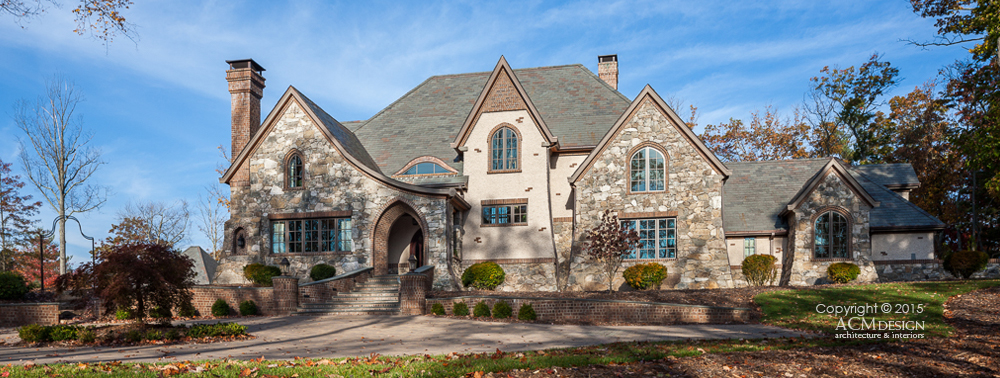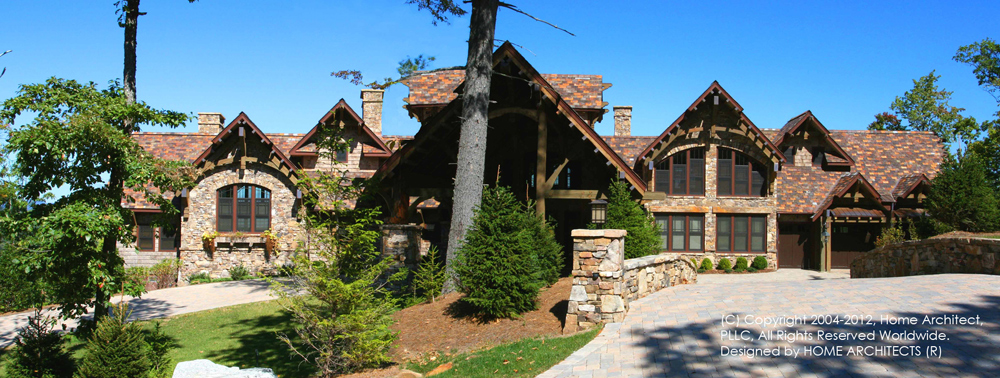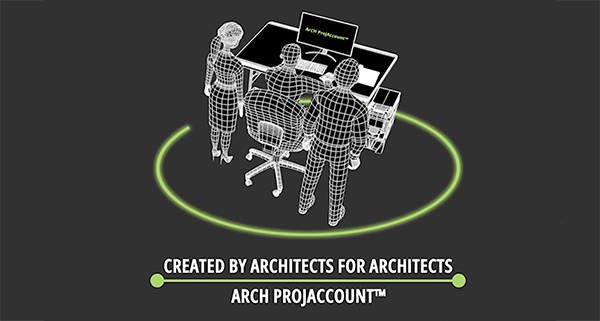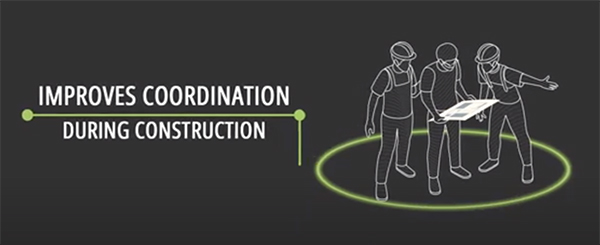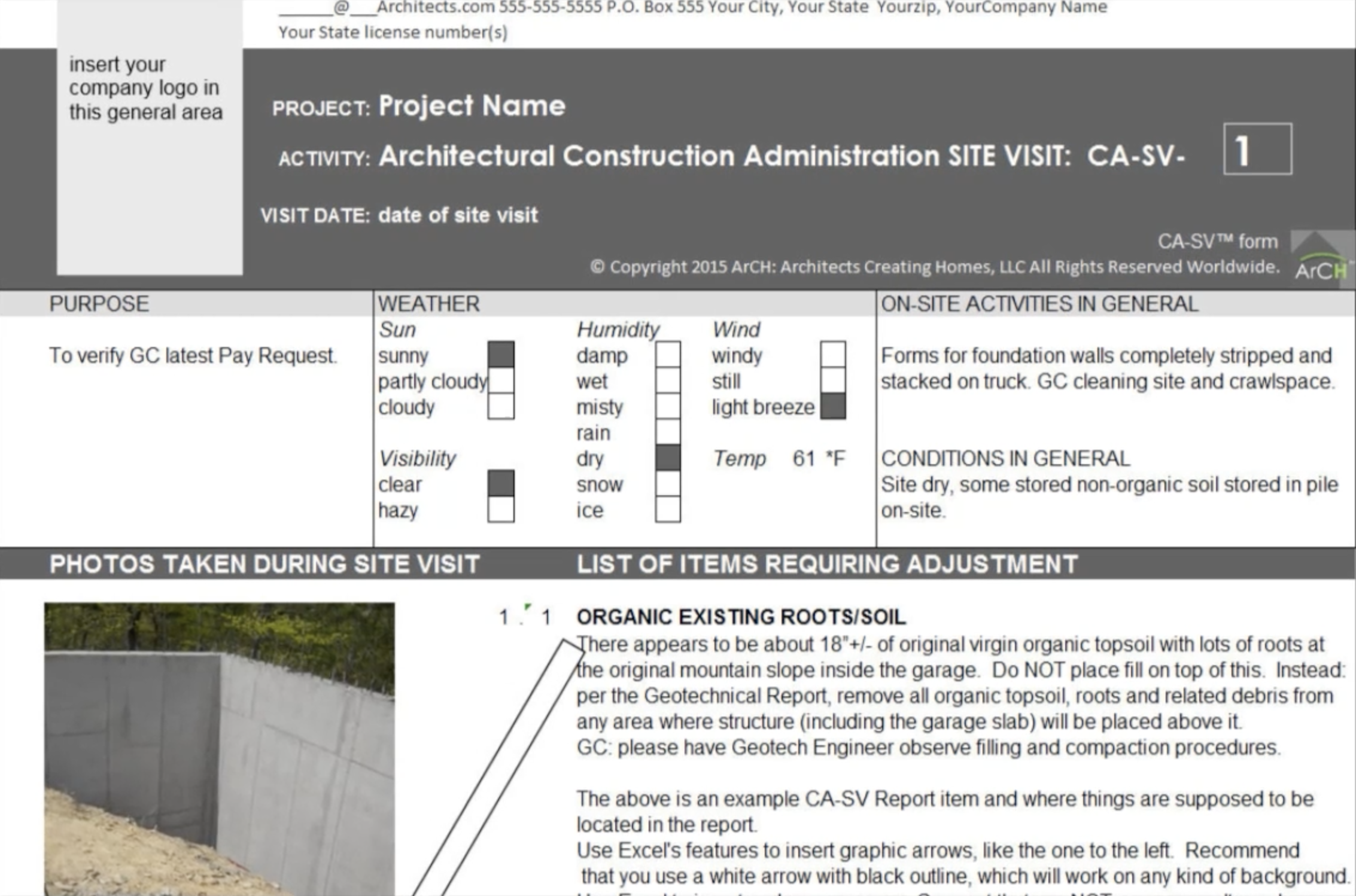Architecture is about creativity and quality design. It is also about the Public’s best interests and being in accordance with their Health, Safety & Welfare. This webapge explains what it takes to become an architect. To find out more, please read on…
The Requirements to being a Licensed Architect & what it takes
A lot!
Architect has historically meant: “person who designs Homes & Buildings.” Legal use of the word has typically been awarded to those people who have earned its use by following the demanding path listed below:
1. EARNING A PROFESSIONAL DEGREE IN ARCHITECTURE (often 6 to 8 yrs)
2. APPRENTICESHIP: WORKING FOR & WITH LICENSED ARCHITECTS AS INTERNS (often 3 to 10 yrs)
3. TAKING AND PASSING THE MULTIPLE-DAY STATE ARCHITECTURAL EXAM
4. MORE APPRENTICESHIP, THEN APPLICATION FOR & RECEIPT OF A STATE LICENSE TO PRACTICE ARCHITECTURE (often another 1 to 8 yrs)
5. WORK FOR ANOTHER DECADE OR SO TO EARN YOUR NCARB CERTIFICATION
6. CEUs : CONTINUING EDUCATION REQUIREMENTS : YEARLY
See below for details about each of these steps:
————————————————————-
1. EARNING OF A PROFESSIONAL DEGREE IN ARCHITECTURE
This normally occurs through a major, accredited university architectural curriculum, concluding with the award of a professional degree in architecture. Some architectural students earn a Bachelor of Design Degree in Architecture from a College of Architecture, and others continue, earning a Master of Arts in Architecture degree. Some students have a 4+2 program, others in the past have gone for 5 years. Still others have been in college and graduate school for up to 8 years, depending on their course of study, the demands of their thesis or final project and other factors. This often requires 19+ hours of course work per quarter, which is exhausting. Typically, this can involve at least 3 “all-nighters” a week (meaning: periods of sustained, focused architectural learning and design activity of from 24 to 48 hours, continuously, without sleep). There is a LOT to learn. People who have not gone through this, cannot possibly know what legitimate degree-earners know about architecture, anymore than home-schooled health care people can hope to know what a licensed Medical Doctor knows. It is unbelievably difficult and one of the reasons why so few people that start courses in an architectural program finish with a degree in architecture.
Some ArCH members recall that of perhaps 500 students starting as freshmen or sophomores in architectural undergraduate classes in at least one major university in the past, only 5 made it through the master’s program in architecture. Of course there was attrition to other universities, but essentially this indicated that only 5% of those who started there were able to successfully complete the obtaining of a professional-level architectural degree.
Some ArCH members recall that certain university architectural courses seem particularly difficult. One ArCH member remembers one course, in particular, in graduate school that was highly mathematical and theoretical and was extremely difficult. Many students failed the course. This ArCH member asked the professor why that particular course was in the curriculum. The professor said: “It’s a flunk-out course, created to weed out those who are not smart enough to become architects. As an architect, your problem-solving skills will be tested to a degree that you cannot imagine. Architects have the sacred duty to protect the Health, Safety & Welfare of the public. We only want the best in our school to become architects.” Therefore, very few people make it through universities with a degree in architecture.
So, after 5 to 8 years in college, do you imagine you are done? Far from it. Read on to see more of what it takes to be an architect…
2. APPRENTICESHIP: WORKING FOR & WITH LICENSED ARCHITECTS in the real world, at an architectural firm, where licensed architects watch and judge your work, how you make decisions, correcting you, coaching you, guiding you. NCARB (National Council of Architectural Registration Boards) has a process that new graduates must follow, called the IDP program (Intern Development Program), which documents the hours of each type of work experience an Intern Graduate Architect must have before being allowed to even sit for the upcoming demanding architectural exam. Does this sound like a Medical Doctor’s internship program? It is. You don’t just come out of college and start designing buildings. You start by learning how to detail how a house & building are assembled, so that your own future designs will go together correctly and function properly. You begin by helping other senior REAL licensed architects by developing their detailed design and Construction Documents.
This internship phase can last between 3 to 10 years +/-. For some people, they never meet all of these IDP requirements, and so, thousands of other hopeful want-to-be architects hit a wall and stop at this point. Are you beginning to understand how this works? The entire process is created like a series of filters that only allows the most capable want-to-be architects to make it through to the next level.
Once you have met your apprenticeship requirements, you then typically study at home (in the late night hours, after working at an architectural company during the day) for your upcoming architectural exams. Some candidates may study for about 6 months, in the early morning and at night, usually until about 2AM. In other words, all that you have accomplished to date does Not adequately prepare you for the demanding multiple-day exam that is waiting for you. Some people assemble voluminous study materials and take mock exams, every week for months (some for years), in order to pass. This takes focus, dedication and capability. This is not a path for the faint of heart. So, part of what it takes to become an architect is focus, intelligence and dedication.
3. TAKING AND PASSING THE MULTIPLE-DAY STATE ARCHITECTURAL EXAM. One of our ArCH members recalls being ill on the day the exams started for him. This didn’t matter to anyone and he knew it. This was it. Do or die. He remembers sipping from a pink Pepto-Bismol bottle all day, while others drank Cokes. He also remembers frequent bathroom trips. His life, from the time he was a child, up to this point, had been planned and focused on passing this test. Fail and your professional life is over before it even begins. Pass and you will be allowed continue on the path to becoming a licensed architect. There is enormous pressure. Most people taking this exam do not pass on the first time and have to return, year after year, trying again and again. Most never make it. It’s just too hard.
The test is created by NCARB (National Council of Architectural Registration Boards), as the national standard, throughout the USA. It is administered by each state’s Board of Architecture. These days, most of it is done on computer. No study materials of any kind are allowed. You bring your brain, your clothes on your back and perhaps your bottle of Pepto-Bismol. The test is usually given in a huge room with dozens, or perhaps hundreds, of hopeful applicants, all sitting at rows of tables. Stern test monitoring architects walk around the room, watching what you do, looking for anything out of line.
The exam can last about 3 days, starting early in the morning and going until suppertime each day. This duration may change over time to be longer or shorter. Many things are covered in the test including, but not limited to: structural engineering, seismic forces, real estate issues & law, ethics, environmental considerations, architectural history, energy issues, site planning, logic & function, other aspects and an all-day design exam, where you are required to create, from scratch, in one day, an entire multi-story building: floor plans, site plan, elevations and building section. And all aspects of your design must comply with building code: stairs, accessible bathrooms, structure, building fire code type, means of egress, community setbacks and other considerations. You must use your time wisely.
After the exam, you will go about your daily life, like the other several hundred test-takers, waiting for the results. And in a few weeks, The Envelope from the State will come to you. With shaking hands, you will open it, unfold the letter and read the words that will form the foundation for the rest of your life. You will either Pass or Fail.
Many people never pass this test. Those that do, deserve to move on to the next part of the process:
4. MORE WAITING, MORE APPRENTICESHIP, THEN APPLICATION FOR & RECEIPT OF A STATE LICENSE TO PRACTICE ARCHITECTURE.
Assuming you have passed the Architectural Exam, there is now a waiting period, where you continue to live your life, work where you have been working, and fill out and submit the official State Board of Architecture forms for your architectural licensure. These forms document all that you have previously done, with documentation of your professional architectural degrees and the NCARB and State documentation of your passing of The test. You also have to have signatures of other, more experienced licensed architects that know of your morals and your character (which had better be very good+), and that you are competent to practice architecture as an architect. These vouchers are not easily obtained from other architects. You have to have been working with and proving yourself to these experienced professionals for some time for them to put their word on the line for you.
And, very important: you have to sign a vow to PROTECT THE HEALTH, SAFETY & WELFARE OF THE PUBLIC. This is the core sacred vow to which all licensed professionals have to adhere. Those that do not take this vow cannot be trusted to do this. Those that do agree to this are monitored to insure that they do so.
Then you submit the forms, along with your check to the State Board of Architecture. Then you wait some more. In about one to two months, assuming that everything that you have said on your application is true and correct and checks out, you receive what you have been working so hard for, during the first third of your life: your Architectural License. You drop to your knees and shout for joy!
Now what? Have you finally done everything it takes to be an architect? Perhaps. But now you have to earn a living. It’s not easy gaining the confidence of clients enough for them to entrust you with their hard-earned dollars to design homes & buildings for them that meet their goals. So:
5. WORK FOR ANOTHER DECADE OR SO TO EARN YOUR NCARB CERTIFICATION. That’s about how long in takes to gain the additional experience and proven track record to earn this critical certification from the national entity that provides architectural licensure reciprocity throughout the USA. Once again, you will need to document everything else you have accomplished thus far, and obtain additional endorsements from satisfied clients and other architects that know of your strong moral character and positive track record of architectural project work. Once again you fill out an application and pay a fee and wait. And, assuming everything you told them was true and was confirmed, you receive your NCARB certificate. This is the equivalent of a Medical Doctor becoming “Board Certified” in one specialty or another. The public can expect that from this, they are dealing with a highly qualified & accomplished professional Architect with a proven track record.
Now then, do you think you’re done? Not quite.
6. CEUs : CONTINUING EDUCATION REQUIREMENTS : YEARLY. You have to continue to prove to the states in which you are licensed, that you, as a licensed architect, have remained abreast of the most current issues, design work and technical knowledge affecting your profession. Every year. Usually this varies between 12 to 18 to 36 hours a year, depending on the state (or states in which you practice) and the professional organizations of which you are a member. This means that you may be required to attend seminars, study technical architectural trends in professional journals, take online webinars, or other course work in various architectural subjects, including building code updates, each year. Once again: this is the sort of thing that most architects have to accomplish in the evenings and weekends, in addition to their office work. Unlicensed people have no such requirement to do this. It is inconvenient and demanding and often costs money. Do you suppose that unlicensed people will be likely to do this, if nothing requires them to do so? You decide. Once again, some architects, even licensed ones, fail to complete their required CEUs each year and either are put on suspension or outright lose their licenses! So: there is more attrition.
————————————————————-
Are you beginning to understand what it takes to become an architect and remain an architect? By law, State Boards of Architecture monitor, reprimand, and when required, fine and incarcerate those posing as architects to the public that have Not accomplished the above.
Step 1 above does not include requirements to prepare yourself to begin the long and multi-decade path to becoming a licensed architect. Such as studying hard and long in high school, taking a college-preparatory curriculum, rather than perhaps doing other things that other young people might enjoy doing. Starting at an early age, to develop the attention and focus required to be successful at each of the big and difficult steps that lie ahead. Sound tough? It is. And it is also one of the most mentally rewarding careers there is, just like other professionals: Lawyers, CPAs, Doctors, Engineers, City Planners and others that require such focused efforts to become and maintain your professional requirements. And, you may not come from a well-to-do family. You may need to obtain student loans to help pay for the University training and living expenses. Going through college exposes many young architectural students to harsh economic realities. Afterward, it may take a decade or longer to pay back student loans. Becoming an architect is likely not something that is handed to most people on a silver platter. You have to love it, or you will not continue.
IF YOU SEE SOMEONE OR A FIRM CLAIMING TO BE “ARCHITECTS” or that offer “architectural” services, question that. Why? Because, as you have seen, there really aren’t that many that make it through and then maintain the status of Licensed Architect. You can go online to any state’s Board of Architecture and see if they are licensed where they claim to be licensed. See if they are. Are they required to be? If you see a storefront in your city or a yellow pages ad or other local presence indicating “architect” status, they are supposed to be licensed to practice architecture there. If they are not, then you might want to take a photo of their storefront and report them to your state Board of Architecture, along with the contact information for that company. They are likely going to receive a “Cease & Desist” order from the State instructing them to remove the words “Architect”, “Architecture” and the like from their service offerings and company name.
Why? Because it is confusing to the public and not in the public’s Health, Safety & Welfare for non-architects to claim to be and to render services they are not qualified to perform. People could die. Homes & Buildings can fall down and otherwise harm people. People’s lives and property can be destroyed. That is why the law is there: to protect you.
Due to the demanding requirements listed above, it should be no surprise that there are tens of thousands of people who dropout from schools of architecture, those who cannot pass the exam, or for one reason or another cannot meet all the requirements for legal status, or cannot remain licensed. They have not been able to accomplish what it takes to be an architect.
Real, licensed architects are required by law to have their various degrees and licenses and certifications proudly displayed on their office and meeting place walls, for public inspection, just like Medical Doctors. If you don’t see such documentation, ask for their license numbers. Inspect their websites. Do they say they are an architect there? Do they disclose their license number(s)? Make sure that you are doing business with a real professional: an Architect.
If you want to put this into perspective with at least one other profession, how would you feel about “Home Health Care” people claiming the title “Doctor?” Would you be comfortable with them performing surgery? Of course not! The same thing with architects. Whether you realize it or not, every time you walk into a home or building, you are relying on the creator of that facility to protect you from the elements, to not rot, crumble and fall down on you, to use your energy dollars and our nation’s resources wisely and to not make you sick. Only architects are the legally created and licensed professionals to accomplish this best.
There are also alternative organizations that name their “club” with titles that closely parallel those of legitimate organizations. They may invent “certifications” that are legally meaningless for their unlicensed membership, created, possibly, to confuse the public and give the impression that they might be architects (even though the fine print may not say this), when they are not, or that they may have some special abilities, when there is no state professional licensure attesting to this. It is simple to distinguish these from the real McCoy. Ask any of them: IS THIS AN ORGANIZATION FORMED OF LICENSED ARCHITECTS?
Most ArCH members sign their e-mail and letters “Architect” after their names, as do many other Architects, just to clarify that they are the real essence of the term.
To summarize, please MAKE SURE THAT YOU ARE DOING BUSINESS WITH A REAL LICENSED ARCHITECT. What does it take to be a real architect? Licensure in at least one state in the USA. Licensing in other states depends on what services are requiring licensure in that particular state. However, having an NCARB certification allows reciprocity in most states, if required, along with any state-mandated additional requirements, if any.
And there are organizations that feel that “if it needs a permit, it needs an architect.” This would be a good trend in America, to insure that the public has only the most skilled professionals designing their homes and buildings.
So, the next time someone asks you what it takes to be an Architect, you will know.
tags: what it takes to be an architect

 <
<






